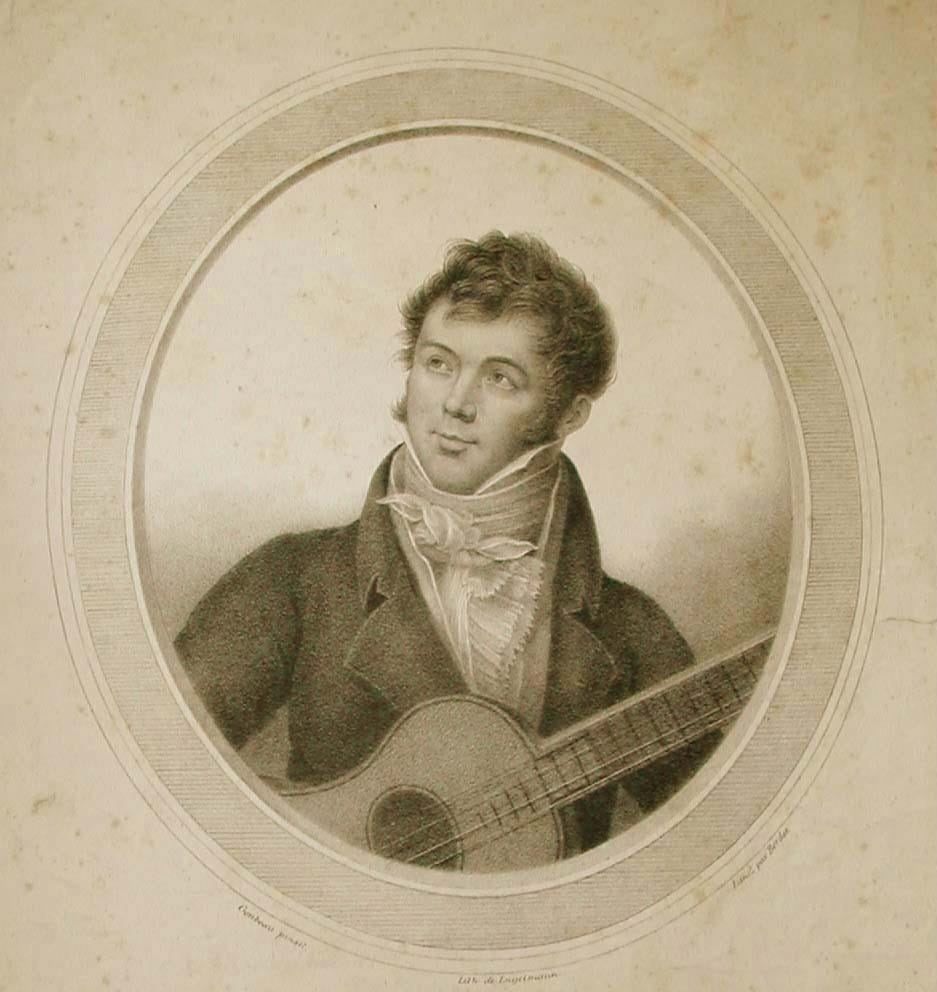‘O Cara Armonia’ by W A Mozart: the Fernando Sor ‘remix’

Picture this: you’re walking down the street in London, with your frock coat swishing around you and your hat at an angle. (Of course you’re wearing a frock coat – it’s 1819) You’ve got to play for your supper at the Marlboroughs’ tonight, but that’s not till later, and they always bring together a fun crowd anyway. You’ll bring the house down like you always do, and everyone will have a good time. Until then, it’s just you and the sunshine, the spring in your step and the song that’s got stuck in your head. And not just your head, either. You’ve already passed two people you recognise from the opera last night, and they were humming it too. It’s just a short little ditty, but my, does it ever take hold! You’ve got to do something with this tune. In your head you pull at it, twist it, stretch it, change keys, hum a little, whistle a snatch. Might we boil down the glockenspiel theme to its basic tintinnabulation, and then see where we go with a theme & variations? Could be good. Could be grand, actually.
Things were roaring in London in the late ‘teens and early 1820s. Money was pouring in from all around the empire, the Regency years had taken everyone’s idea of having a good time up a notch or two, and now that Napoleon had shuffled off the world stage, everybody who was anybody was thinking much less about war, and much more about having a good time. The British capital was the place to be if you were a musician looking for patronage, and so it was with Fernando Sor. The who’s who in London wanted music at their parties, and not just music, but rip-roaring spectacle. Sor was good at this. He was theatrical, inventive, and technically rather brilliant. And like any good composer in tune with the cultural values of his time, (or like any good DJ today) he was also good at knowing what people would want to hear. Contemporary records relate that Sor’s performance style was as much dramatic as is was virtuosic – he read a room well, and used his verve as a musician to thrill his audience.
In 1819, Mozart’s last great theatrical triumph, the comic opera The Magic Flute debuted in London, and it took the city by storm. Everyone loved the allegorical story of two young friends going out into the world, growing through their experiences, and each one finding love and his own happily-ever-after ending. It didn’t hurt that Mr Mozart was at his best with the score, either. There was plenty of good music worth reworking, as Sor would do later – but it was the duck-costume-wearing Papageno’s magic glockenspiel tune, which the beleaguered young character plays to mesmerise an angry mob bent on capturing him and his friend, that ironically did cast a spell of sorts over Sor as he sat in the audience, even as it worked its magic on stage in the story:
Here it is again, but in instrumental form:
Sounds simple, and it’s easy enough to see that getting stuck in someone’s head, isn’t it? Sor, the entertainer extraordinaire, decided to use his guitar skills and composing/improvising abilities to turn the tune on everyone’s lips into a party trick so people could enjoy the feel of the aria even when they weren’t at the opera. His reworking of it into a theme and variations would be a tune everyone knew, but developed, exaggerated, embellished – as a musical offering, it would be 10 times the tune it was based on. I doubt the old garçon’s spirit would mind my saying he took the equivalent of a pop hit, and came up with a brilliant remix!
Much as poets have applied thoughts to paper within the framework of a given rhyme scheme, Sor let his mind wander within the bounds of a theme and variations, beginning by outlining his highly theatrical vision with the charged, mysterious introduction. I think of this section as serving the same purpose as the prologue to a dramatic production. It sets up the audience for a journey. You can almost hear him walking along with a spring in his step as he reduces the original glockenspiel theme to what we guitarists know as the theme, and then lets fly through variation after variation with virtuosity, the formulaically-requisite minor key section, an especially creative section, undisguised playfulness (‘the playfulness of pixies jumping around a fire’ is how Emilio Pujol is said to have described the fourth variation), and bombast, getting sprightlier and more expressive as the piece moves along, and building to a particularly grand finale by the end.
And that, dear reader, is approximately how Sor’s Op.9 or Mozart Variations came to be. There is, of course, no way of knowing in which aristocrat’s mansion Sor debuted the piece – I picked a name that’s plausible and representative; there is also a record of his having played a version of it at a soiree in Paris, though that was a few years later. Regardless of whether you play it yourself or just enjoy hearing it, I hope this helps to add a few layers of meaning to your experience.
Reprinted with permission from The Well-Tempered Guitar – http://tinyurl.com/znuv5jv





